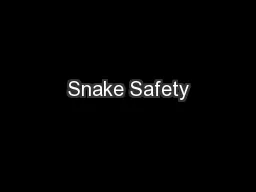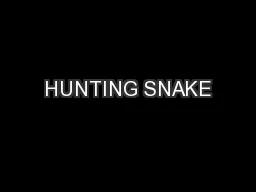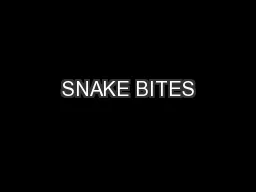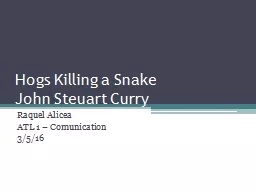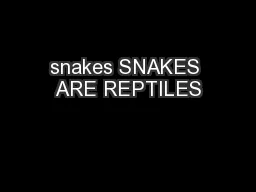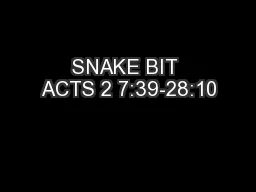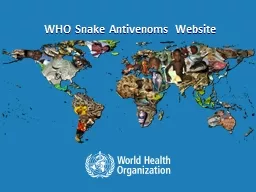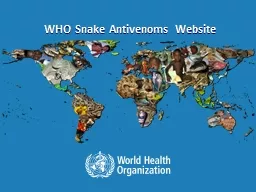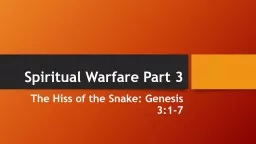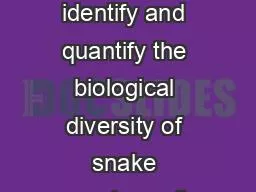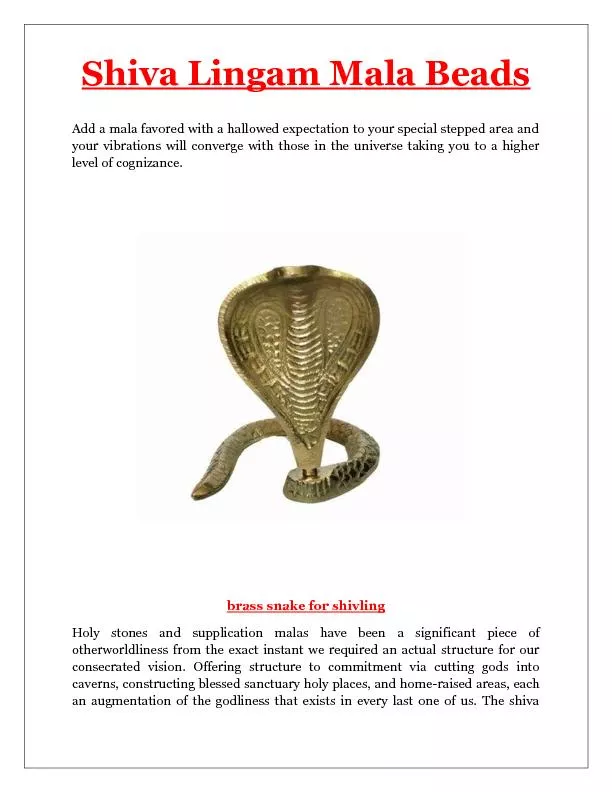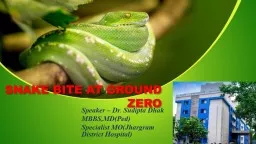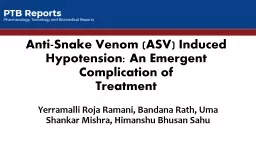PPT-Snake and Spider envenomation
Author : lindy-dunigan | Published Date : 2019-06-19
EMET 2015 Objectives Review current management of medically important snake bites in Southern Illawarra Review management of funnel web bite Review management of
Presentation Embed Code
Download Presentation
Download Presentation The PPT/PDF document "Snake and Spider envenomation" is the property of its rightful owner. Permission is granted to download and print the materials on this website for personal, non-commercial use only, and to display it on your personal computer provided you do not modify the materials and that you retain all copyright notices contained in the materials. By downloading content from our website, you accept the terms of this agreement.
Snake and Spider envenomation: Transcript
Download Rules Of Document
"Snake and Spider envenomation"The content belongs to its owner. You may download and print it for personal use, without modification, and keep all copyright notices. By downloading, you agree to these terms.
Related Documents


